Grand Army Plaza
Fifth Avenue (at 59th Street)
Grand Army Plaza is dedicated to the Grand Army of the Republic, which was the name for the Union army in the American civil war. Fittingly, like America during the war, it is divided into two halves split by Central Park South.
The southern half of the plaza is built around the Pulitzer Memorial Fountain, designed by architect Thomas Hastings (1860-1929) and sculptor Karl Bitter (1867-1915) and dedicated in 1916. The fountain was a posthumous gift by publisher Joseph Pulitzer (1847-1911) in a posthumous act of one-upmanship for rival William Randolph Hearst's U.S.S. Maine monument on the opposite side of the park. (reference), (reference)
The northern half of the plaza features a monument to William Tecumseh Sherman (1820 - 1891), an Ohio native and West Point Graduate best remembered as the General who cut a path of death and destruction through the South during the Civil War in his "March to the sea", culminating in the surrender of Confederate General Joseph E. Johnston on April 26, 1865, 17 days after the surrender of General Robert E. Lee at Appomattox.
Upon Sherman's death, members of the Chamber of Commerce commissioned Augustus Saint-Gaudens (1848 - 1907) to create this guilded-bronze equestrian group statue, in which he was able to draw upon a bust of Sherman that he had sculpted in 1888 during 18 two-hour sittings with the elderly general. Saint-Gaudens originally wanted the statue placed near Grant's Tomb in Riverside Park, but the family objections led to its placement here. The statue was installed on a pedestal designed by architect Charles McKim and the statue was dedicated in 1903. The statue was restored in 1989, causing a mild controversy when the community was stunned by the gaudy gold leaf restored to its original lustre.
To General William Tecumseh Sherman
Born Feb 8 1820
Died Feb 14 1891
Erected by citizens of New York
under the auspices of the
Chamber of Commerce
of the State of New York
The Doris C. Freedman Plaza (dedicated in 1982) sits just to the north of General Sherman and features rotating six-month sculpture installations organized by the Public Art Fund.

Grand Army Plaza
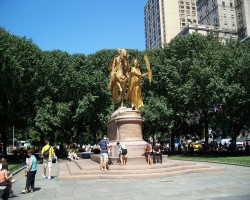
Grand Army Plaza
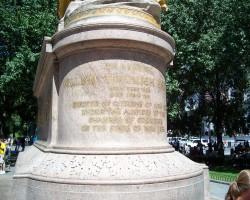
Grand Army Plaza
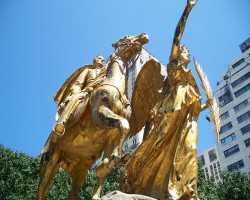
Grand Army Plaza
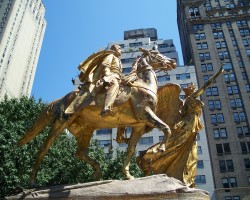
Grand Army Plaza
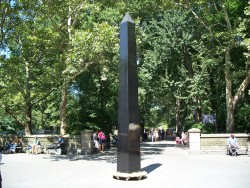
Grand Army Plaza

Grand Army Plaza
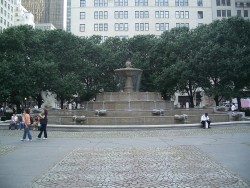
Grand Army Plaza

Grand Army Plaza
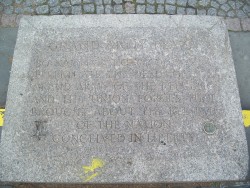
Grand Army Plaza
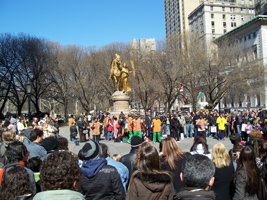
Grand Army Plaza
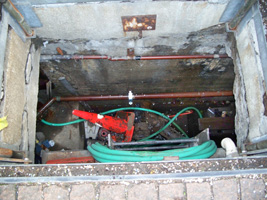
Grand Army Plaza